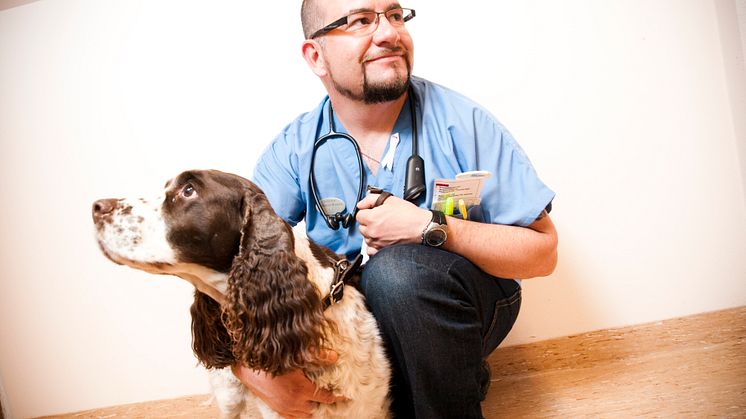Pressmeddelande -
Genetic causes of canine mammary tumors – new SLU research shows
Various forms of cancer are one of the most common causes of death in dogs today. But both diagnosis and methods of treatment for cancer in dogs and cats have developed dramatically in recent years.
In his doctoral dissertation at SLU, the Swedish University of Agricultural Sciences in Sweden, veterinarian Patricio Rivera identifies various risk factors for developing mammary tumors in dogs. Genetic causes, among others, contribute to the outbreak of the disease in certain breeds, including English Springer spaniel, Doberman, boxer, and German shepherd.
Even though this research focused on mammary tumors in dogs, there has been a human connection in many of his studies. Mammary tumors in female dogs are three times more common than breast cancer in women.
Patricio Rivera found that spaying reduces the risk of mammary tumors and that the age of the dog when it is diagnosed and the type of mammary tumor both affect the survival period of the animal.
BOTH HUMANS AND DOGS
By studying the ten genes that cause breast cancer in women, he found that the two most common genes in humans, BRCA1 and BRCA2, also contribute to the risk of mammary tumors in female English Springer spaniels.
In dogs he also found a variant of a gene, a so-called haplotype, tied to the immune defense that had a protective effect against mammary tumors. Female English Springer spaniels that carry this gene have a lower risk of developing mammary tumors than others of the same breed.
“It’s my hope that this research will ultimately be of significance both for women and female dogs when it comes to diagnosis and treatment,” says Patricio Rivera.
The earlier tumors are discovered – the better the prognosis for survival. Just as women should examine their breasts, dog owners are recommended to regularly check their female dogs for lumps.
BOTH BENIGN AND MALIGNANT
Mammary tumors are the most common tumor disease in female dogs, appearing most frequently in middle-aged and older animals. More than 50 percent of the tumors are benign and do not spread to other parts of the body.
The malignant tumors, on the other hand, have a potential to spread and establish daughter tumors in other organs and tissues. The female dog often develops tumors in multiple parts of the mammary glands at the same time, and these tumors can be of various kinds.
The most reliable method of diagnosis is microscopic examination of tissue (biopsy) from the tumor. As a rule, a malignant mammary tumor will be removed by surgery, but the prognosis after the operation is very individual and depends on the nature of the tumor, among other factors.
Spaying at an early age, preferably before the female dog reaches sexual maturity, is the most radical and reliable method to avoid mammary tumors in dogs. The tumor’s development is dependent on sex hormones. On the other hand, if the dog is given contraceptive injections or some other hormonal treatment during her life, there is an increased risk of developing mammary tumors.
UNIQUE MATERIAL
In his research, Patricio Rivera collected blood samples from 600 female dogs between the ages of two and fourteen years of the English Springer spaniel breed and a number of dogs of other breeds. By comparing the genes of sick and healthy dogs, he found gene variants that impact the risk of developing mammary tumors in the breed under study.
These samples now constitute a unique and important biological material that can serve as a foundation for future research in the field.
“At present there are no genetic tests that can tell us which dogs carry genes that predispose them for mammary tumors, but I hope to be able to continue to do research on this,” says Patricio Rivera.
Patricio Rivera, Department of Clinical Sciences at SLU, will publicly defend his dissertation Biochemical Markers and Genetic Risk Factors in Canine Tumors on Friday, June 4, 2010.
For more information: Patricio Rivera phone: +46 (0)18-67 29 57; mobile: +46 (0)70-37 94 800 patricio.rivera@kv.slu.se


